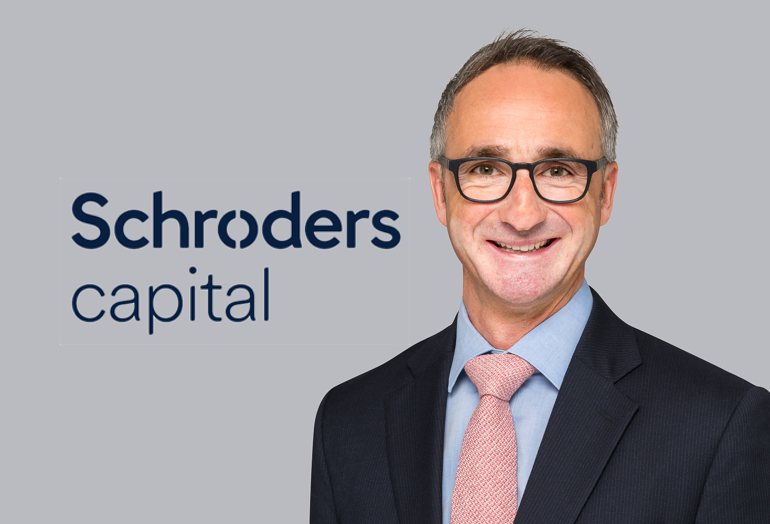For renewals, ILS portfolio construction & positioning are key: Ruoff, Schroders Capital

With the focus of ILS managers now shifting towards the all-important end of year reinsurance renewals, Stephan Ruoff, Global Head of Schroders Capital ILS, explained to us that insurance-linked securities (ILS) portfolio construction and positioning are a key focus at his firm.
For Ruoff, this is all about ensuring the team understands the portfolio construction goals for the ILS funds under their remit, while having transparency and clarity over the portfolio make-up and especially the terms and conditions of reinsurance or retrocession positions invested in.
Speaking with Artemis in an interview around the Monte Carlo Reinsurance Rendez-vous this year, Stephan Ruoff provided some insights into the important work that is undertaken in advance of and to prepare for what can be a particularly busy reinsurance renewal season.
After a number of years of hardening pricing, the ILS market is well-positioned to be more selective with the investments it makes at renewals, but at the same time has to have a focus on maintaining quality and not be drawn by higher pricing.
Ruoff said that, at this time of year, the first hurdle is always getting through the Atlantic wind season.
“First we need to go through the entire tropical cyclone season to assess its impact on the state of the reinsurance market ahead of year-end renewals, especially should there be another major losses (such as Hurricane Ian in 2022), and also, where losses occurred,” he explained.
Next, Ruoff told us, “It is important to have a clear understanding on how to position ILS portfolios and their building blocks ahead of renewals, communicate and execute accordingly.”
Right now, it’s especially important to understand and then manage exposure to elements such as secondary perils, and Ruoff highlights US severe connective storms (SCS) as an area of specific concern given the escalating losses experienced by insurers in recent years.
Selectivity is another key area of focus, as the shape and ultimately performance of an ILS portfolio can have a lot to do with the counterparties that are supported with reinsurance capital by the ILS manager.
Ruoff said that, “Managers should chose counterparties carefully and understand rationale for buying protection, exposure growth, frequency and severity of losses and loss trends.”
“The same goes for service providers, they also need to be chosen wisely,” he continued to explain. Adding that, “Due Diligence and Know Your Client (KYC) are essential components of the underwriting process.”
Of course, much of this boils down to the need for managers to keep underwriting discipline through the reinsurance renewals process, Ruoff told us.
“Wordings, alignment of interest between cedants and capacity providers, have all moved to a healthy equilibrium over the recent market hardening, leading to revived ILS investor interest,” he said.
The ILS industry faces challenges though and some of these come to the fore during the renewal process, as areas that require a particular focus to ensure robust ILS fund portfolio construction.
Perhaps the largest challenge for ILS managers as they assess risk investment opportunities is climate change.
Ruoff said that, “Climate change shows a visible impact on secondary perils, such as severe convective storms, wildfire, local flooding, etc,” adding that, for ILS managers, “We need to understand the possible impact of developing weather patterns due to climate change.”
Other factors that influence the renewal preparations and risk selection process are, “Macro environment trends, such as inflation, exposure concentration in catastrophe exposed areas, interest rates globally are driving pricing assumptions and need to be reflected in structuring & pricing risk transfer,” Ruoff believes.
Risk models are key to the work of ILS managers, both third-party and their own in-house developed view of risk.
Ruoff cautioned that, “Understanding what models can do, but especially what they can’t do, is vital. Investors need to develop their own view of risk in order to avoid information asymmetry.”
He sees investors becoming increasingly focused on understanding how ILS managers have performed and so robust portfolio construction and positioning processes are vital for specialist ILS investment teams, Ruoff believes.
Saying, “The ability to model risks correctly and build resilient portfolios, hence proven capabilities and track records of ILS managers, will become even a higher focus of ILS investors.”
Also read: Bullish on private ILS, but cat bonds may grow fastest into 2024: Ruoff, Schroders Capital.
Read all of our interviews with ILS, reinsurance and risk transfer sector professionals here.






